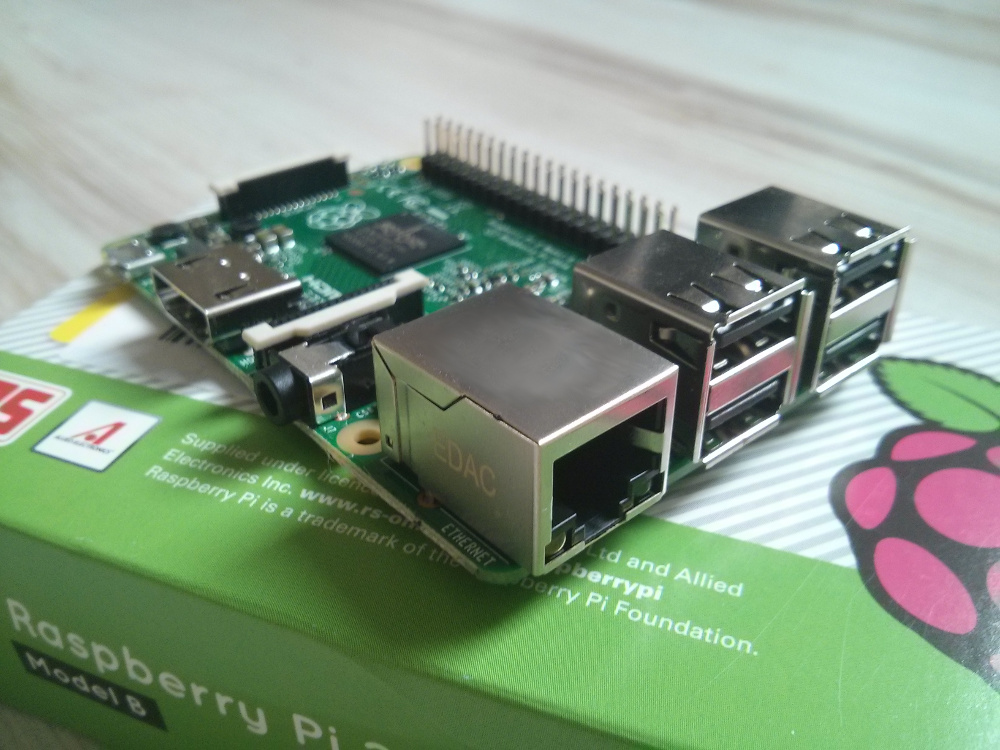The Raspberry Pi is on the market since 2012 and offers unbelievable many possibilities for tinkering and controlling. Meanwhile there have been several model updates and since March 2018 the latest version, the Raspberry Pi 3 B+, is available on the market. Since I regularly receive questions about the differences, I would like to clarify some differences and questions about the models below.
Technical differences
| RPi 3 B+ | RPi 3 B | RPi 2 B | RPi Zero (W) | |
|---|---|---|---|---|
| Size | 85,6 × 56mm | 85,6 × 56mm | 85,6 × 56mm | 65 x 30mm |
| SOC | BCM2837 | BCM2837 | BCM2836 | BCM2835 |
| CPU | ARM Cortex-A53 (ARMv8-A) |
ARM Cortex-A53 (ARMv8-A) |
ARM Cortex-A7 (ARMv7) |
ARM1176JZF-S (ARMv6) |
| Cores | 4 | 4 | 4 | 1 |
| Frequency | 4x 1400 MHz | 4x 1200 MHz | 4x 900 MHz | 1000 MHz |
| RAM | 1024 MB | 1024 MB | 1024 MB | 512 MB |
| USB | 4x USB2.0 | 4x USB2.0 | 4x USB2.0 | 1x USB2.0 |
| Audio | HDMI (digital) 3,5mm Klinken |
HDMI (digital) 3,5mm Klinken |
HDMI (digital) 3,5mm Klinken |
HDMI (digital) |
| Network | 10/100/1000 MBit | 10/100 MBit | 10/100 MBit | – |
| Wlan | 2,4/5 GHz WLAN ac |
2,4 GHz WLAN b/g/n |
no | yes (Zero W) no (Zero) |
| Bluetooth | yes | yes | no | ja (Zero W) no (Zero) |
| GPIO | 40 Pins | 40 Pins | 40 Pins | optional |
| Power consumption |
max. 7 W | max. 4 W | max. 4 W | 0,5–0,7 W |
| Power source | 5V Micro USB min. 2,5 A |
5V Micro USB min 2,5 A |
5V Micro USB min. 2 A |
5V Micro USB min. 1 A |
| Price | ca. 35€ | ca. 35€ | ca. 32€ | ca. 26€ (Set) |
Which model for which purpose?
Raspberry Pi 3, Modell B+
Photo credit: raspberrypi.org
Conclusion: The RPI 3 B+ is the first choice for applications where maximum performance is required and power consumption is of secondary importance, e.g. as a multimedia centre or as a gaming PC with Recalbox/RetroPi.
Raspberry Pi 3, Modell B
The Model 3 B was released in February 2016 and is the first Raspberry Pi with integrated WLAN chip. This makes an additional WLAN USB stick superfluous for most applications. It also has Bluetooth. The processor supports a 64-bit instruction set and clocks at 4x 1200 MHz – and all this with a low power consumption of max. 4 watts. The 33% faster clock rate compared to the Raspberry Pi 2 brings a performance increase of 50-60% in 32-bit mode, according to RPi Foundation. This is remarkable and makes the Raspberry Pi 3B a full-fledged PC.Conclusion: Despite the 200MHz lower clock rate per core than the Raspberry Pi 3 B+, it is suitable for applications requiring high CPU performance. Especially when low power consumption is important, the RPi 3B is preferable to the 3B+.
Raspberry Pi 2, Modell B
Photo credit: Multicherry (Wikipedia)
Conclusion: If you want to use the Raspberry Pi with a graphical interface or even as a multimedia center on your TV, you should at least use the RPI 2 Model B. Because of the same price, the Raspberry Pi 3 B/B+ can often be the better choice.
Raspberry Pi Zero / Zero W
Photo credit: raspberrypi.org
Conclusion: The Zero W model is the single board computer of choice when extremely compact size and minimum power consumption are required.
Note: There is a rating embedded within this post, please visit this post to rate it.
